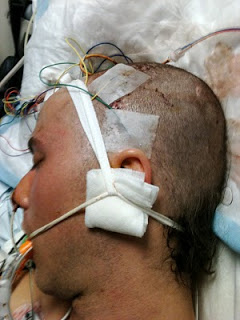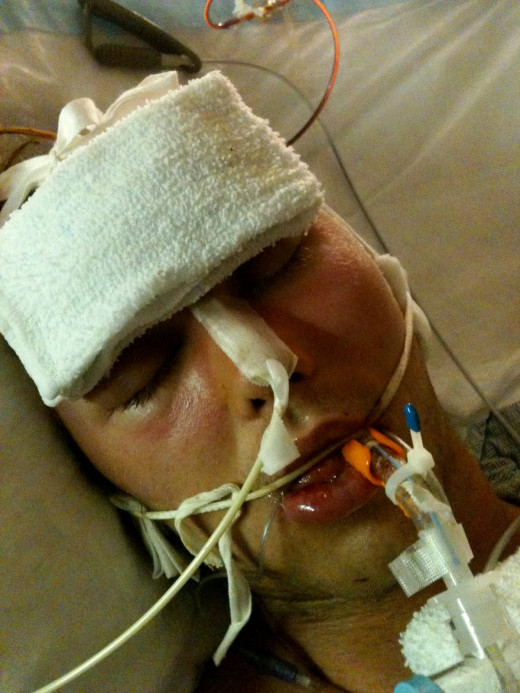Meningococcal Infection: Clinical Manifestations Of Meningococcal Meningitis (Cerebrospinal Fever)
The Morbidity Of Meningococcal Infection

A General Overview Of Meningococcal Infections
Nisseria meningitis (meningococcus) is pathogenic exclusively to man. The clinical syndromes include meningitis, meningococcal septicemia and rarely lesions in the joints, ears, eyes, adrenal glands, lungs and heart.
Classification: Meningococci can be classified into 8 groups designated as A, B, C, D, X, Y, Z and Z1 based on agglutination and agglutinin absorption. Groups A, B and C are responsible for most of the infections.
Epidemiology: The organisms are found in the nasopharynx of 5 to 10% of humans who act as carriers. Before the onset of epidermics, the carrier rate among the local population goes up above 20% and during an epidermic, 90% of subjects may carry the organisms. Outbreaks usually occur in close- knit communities such as inmates of jails, ships, army camps, or dormitories. Sporadic cases may also occur. In India for instance, a clear seasonal prevalence is not seen. The organism commonly spreads through droplet infection and to some extent, through formites. In majority of cases, the infection is asymptomatic. In some, the only manifestation is an upper respiratory tract catarrh.
Pathogenesis and pathology: The major lesions are cerebrospinal meningitis and meningococcal septicemia. Bacteremia precedes the meningitis. The organism may reach the central nervous system directly along the perineal sheath of the olfactory nerves or through the blood stream. In the central nervous system, meningococci produce suppurative lesions of the pia arachnoid. Inflammatory lesions are seen in the surfaces of the brain and spinal cord and the ependymal lining of the ventricles. The whole of CSF becomes turbid and purulent. The base of the brain and the surface of the cerebral hemispheres show thick pus. This exudates may block the foramina leading to internal hydrocephalus and also compress the cranial nerves emerging from the base of the brain. Meningococci may invade the underlying cerebral cortex as well. Histologically, the lesions show perivascular cuffing with polymorphs. Thrombosis of small blood vessels may occur. In severe cases, subdural effusions containing blood or exudates may occur.
Meningococcal septicemia (meningococcemia) is characterized by hemorrhagic manifestations. The organisms can be demonstrated in the small blood vessels from all organs. Vascular damage occurs as an allergic phenomenon (Schwartsman phenomenon) caused by the endotoxin of meningococci. In fulminant meningococcemia, hemorrhages occur into the adrenal glands leading to adrenal failure and profound shock. Generalised hemorrhagic tendency may develop due to disseminated intravascular coagulation. Metastatic lesions occur in the joints, ears, eyes, and lungs.
The Treatment Of A Patient With Cerebrospinal Fever

Meningococcal Meningitis (Cerebrospinal Fever)
It may occur in epidemic and sporadic forms. The commonest age group is from 6 months of life to adolescence. Incubation period varies from 3 to 5 days and there may be a preceding upper respiratory tract infection. Onset is acute with fever and other constitutional features like severe headache, neck rigidity, vomiting and photophobia. Fever is usually high grade, intermittent and associated with rigor and chills. The pulse is slow, Herpes labialis may develop. The patient is irritable and prefers to lie curled in bed. Drowsiness, confusion, delirium and coma supervene. Convulsions are common at the onset, especially in children. In a large proportion features of meningococcal septicemia are seen. These include maculopapular and purpuric skin rashes appearing over the axilla, flanks, wrists and buttocks and ecchymosis and peripheral gangrene. Signs of menigeal irritation are evident from an early stage. These include neck rigidity, Kernig’s sign and Brudzinski’s signs. There is pain over the hamstrings when the knee is extended passively with the hip flexed to 900 and the extension is restricted (Kernig’s sign). Brudzinski’s leg sign is the flexion of the opposite knee when Kernig’s sign is elicited on one side. Brudzinski’s neck sign is flexion of both legs when the neck is passively flexed. In severe cases, especially in children, the spasm of neck muscles may be so severe as to produced head retraction and opisthotonus.
Rise in intracranial tension may lead to papilledema. In a small proportion of cases, blindess, deafness, and hemiplegia may be found in the acute phase. Some of the patients recover within a month. A toxic encephalopathy may develop in some patients and this is probably due to diffusion to toxins. It is characterized by the development of deep coma within a few days of onset. This condition is associated with a mortality up to 50%. The development of subdural effusion, internal hydrocephalus or brain abscess should be suspected from the development of localizing signs and progressive deterioration, despite adequate therapy. Most of the untreated patients die in a stage of deep coma within days or weeks, but a few may proceed to a chronic phase characterized by progressive emaciation, opisthonus, paralysis, bedsores and hydrocephalus.
© 2014 Funom Theophilus Makama









